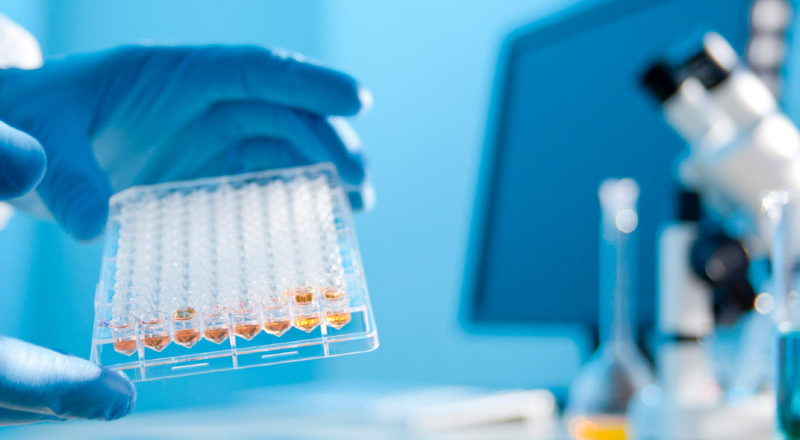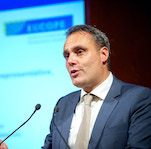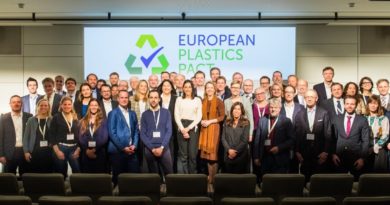
Reinforcing Europe as a centre for pharmaceutical innovation
Europe is home to a rich innovation ecosystem with start-ups, world-class research institutions, top universities for life sciences and many small and mid-sized pharmaceutical and biotech companies. Over the past 20 years, innovation has helped revolutionise healthcare, improved patient outcomes, and transformed treatments, including making chronic conditions more manageable. At the same time, Europe has faced increasing competition from other world regions in terms of attracting investment and research1. While continuing to invest in R&D, the US and China significantly outspend the EU2, and attract clinical trials in innovative technologies3. A targeted review of the EU’s General Pharmaceutical Legislation provides an opportunity to reinforce the EU’s competitiveness on the global stage, built on a future-proofed regulatory framework that continues to reward and promote innovation.
Investing in the development of novel therapies is a risky, expensive, and long-term endeavour with no guarantee of success. Innovation is the first step to access, and industry needs a viable business model to develop, manufacture and market novel therapies. As such, a robust and predictable regulatory and incentive framework plays a key role in allowing industry to undertake these risks.
The EU’s legislative and regulatory framework is built on strong foundations and has supported the development of novel therapies across a range of therapy areas, including rare diseases.
Looking to the future and the emergence of new technologies and approaches to evidence generation, the EU must reinforce the right regulatory environment that acts as a mentor and coach towards sustainable innovation to remain competitive.
When the basis of the EU’s current pharmaceutical framework was laid out in 2004, the international landscape looked different from today. One example is the role of China on the global stage. In 2004, Chinese firms were predominately generics-focused, however, in the intervening years, China has become a major innovator in the global biopharmaceutical market4, alongside the EU and US, the latter of which has continued to invest in its own industry.
Essential elements of the EU’s regulatory and legislative framework which should be retained and expanded on include the IP framework and the high quality, safety and efficacy standards. Similarly, the Regulatory Data Protection framework outlined in the General Pharmaceutical Legislation which established 8 years of data protection and 10 years of marketing protection, serves as a key incentive driving investment. Crucially, the flexibility offered to the European Medicines Agency (EMA) has been essential in allowing greater innovation for the ultimate benefit to patients. The EMA’s ability to develop guidelines, scientific working groups and other structures such as PRIME have allowed the EU to respond to new developments that were unforeseen 15 years ago. The EMA’s SME office also plays a key role supporting small and mid-sized companies bringing innovative solutions to patients. Such flexibility should remain in the system, complementing the predictable regulatory framework.
Reflecting on the COVID-19 experience, the EMA demonstrated the potential of a rolling review process which could be embedded within the EU system. Similarly, the derogation on GMO requirements offered to the COVID-19 vaccines underlines the need to revisit the application of GMO requirements on therapeutic solutions for patients.
Removing the GMO requirement for therapeutic ATMPs would reduce administrative burdens and facilitate clinical trials.
Looking to the future, there are concrete changes that can make the EU more attractive for investment, thereby improving access. These include:
- Facilitating earlier and more frequent dialogue between regulators and developers, especially for innovative therapies such as ATMPs to accelerate assessment procedures;
- An update to the regulatory system to allow for new concepts, notably innovative and adaptive clinical trials and Real World Evidence (RWE). Drug developments for severe diseases where patient numbers are low and traditional trial designs are not feasible require alternative evidence generation methods, such as single arm trials with external controls (e.g. natural history);
- Increased acceptance, guidance on, and use of RWE by the EMA and HTA bodies in both pre- and post-marketing contexts;
- Regulatory streamlining, including reducing approval timelines to bring them in line with global standards;
The European Commission must foster an environment that promotes, rewards, and encourages research and development in Europe in the context of an increasingly competitive global environment. It is in this regard that a change to the legislation could have the greatest positive impact on the pharmaceutical environment. The EU should strike a balance between enabling access, maintaining confidence in pharmaceutical products, and supporting a sustainable industry for future innovation. We continue to explore other solutions and policy proposals that will make the EU more attractive for investment.
Despite the financing gap with the US and China, attractive opportunities await in Europe for those who focus on cultivating them. With its strong innovation fundamentals and talent pools, the EU should look to reinforce the regulatory and legislative framework so that it is appropriate for the coming decades.
This should build on the excellence that is already in place and ensure that the system is sufficiently flexible to accommodate innovation and technological breakthroughs we have not yet anticipated thereby improving the continent’s competitiveness on the global stage.
EUCOPE – the European Confederation of Pharmaceutical Entrepreneurs
EUCOPE is Europe’s trade body for small to medium-sized innovative companies working in the field of pharmaceuticals and medical devices. We give a voice to more than 900 research-orientated innovative companies and associations active in research, development of pharmaceuticals, biotechnologies and medical devices.
______________________________________________
1 McKinsey & Co. (2019, May). Biotech in Europe: Scaling Innovation. https://cms.biocentury.com/assets/images/whitepapers/Biotech-in-Europe-Scaling-Innovation-McKinsey-BioCentury-Report-BioEquity-2019ps.pdf
2 European Commission, Joint Research Centre, Grassano, N., Hernández, H., Guevara, H. (2021). The 2021 EU industrial R&D investment scoreboard : executive summary, Publications Office. https://data.europa.eu/doi/10.2760/794996
3 Fernández, C. R. (2020, January 14). EU Regulations Are Holding Back Gene and Cell Therapy Clinical Trials. Labiotech.Eu. https://www.labiotech.eu/trends-news/eu-regulations-cell-gene-therapy-trials/
4 Deu, F. L., Zhang, F., & Zhou, J. (2021, November 4). The dawn of China biopharma innovation. McKinsey & Company. https://www.mckinsey.com/industries/life-sciences/our-insights/the-dawn-of-china-biopharma-innovation




